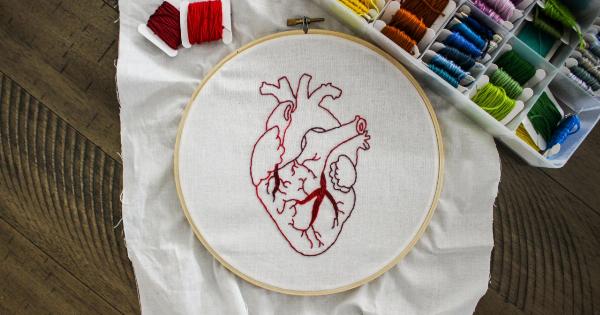Diabetes is a chronic condition that affects millions of people worldwide. According to the World Health Organization (WHO), the number of people with diabetes has risen from 108 million in 1980 to 422 million in 2014.
Diabetes is a disease that occurs when the body cannot produce or use insulin effectively, leading to high blood sugar levels. Over time, high blood sugar levels can damage the body’s organs and lead to complications such as heart disease, stroke, kidney disease, and nerve damage.
Current Treatments for Diabetes
Currently, there is no cure for diabetes, but it can be managed through various treatments. The most common treatments for diabetes include:.
1. Insulin Injections
Insulin injections are a common treatment for people with type 1 diabetes. People with type 2 diabetes may also require insulin injections when their blood sugar levels are high.
Insulin injections help to lower blood sugar levels by allowing glucose to enter cells and be used for energy.
2. Oral Medications
Oral medications are another common treatment for diabetes. These medications help to lower blood sugar levels by increasing insulin production or by making cells more sensitive to insulin.
Some common oral medications for diabetes include metformin, sulfonylureas, and meglitinides.
3. Diet and Exercise
Diet and exercise are essential components of managing diabetes. A healthy diet can help to control blood sugar levels, while regular exercise can help to improve insulin sensitivity and lower blood sugar levels.
Maintaining a healthy weight is also important in managing diabetes.
New Hope for Diabetics
A groundbreaking device called the artificial pancreas is providing new hope for people with diabetes. The artificial pancreas is an automated closed-loop system that combines a continuous glucose monitor (CGM) with an insulin pump.
The device continuously monitors blood sugar levels and delivers the right amount of insulin to keep blood sugar levels within a healthy range.
How the Artificial Pancreas Works
The artificial pancreas consists of three components:.
1. Continuous Glucose Monitor (CGM)
A continuous glucose monitor (CGM) is a small device that is inserted under the skin. It continuously measures glucose levels in the fluid between cells and sends the information to a small receiver or a smartphone app.
This allows people with diabetes to track their blood sugar levels in real-time.
2. Insulin Pump
An insulin pump is a small device that delivers insulin through a cannula placed under the skin.
The pump can be programmed to deliver a basal rate of insulin throughout the day and deliver additional insulin as needed to cover meals or to correct high blood sugar levels.
3. Control Algorithm
A control algorithm is a software program that connects the CGM and insulin pump. The control algorithm uses the blood sugar readings from the CGM to calculate the right amount of insulin to deliver through the insulin pump.
The insulin is delivered automatically without the need for manual intervention.
Benefits of the Artificial Pancreas
The artificial pancreas offers several benefits for people with diabetes:.
1. Better Blood Sugar Control
The artificial pancreas provides a more precise and accurate way to manage blood sugar levels. It adjusts insulin delivery in real-time based on the individual’s blood sugar readings.
This helps to avoid high or low blood sugar levels and reduce the risk of complications associated with diabetes.
2. Reduced Burden
The artificial pancreas reduces the burden of managing diabetes. It eliminates the need for multiple daily injections and constant monitoring of blood sugar levels. It also provides more freedom and flexibility in terms of eating and physical activity.
3. Improved Quality of Life
The artificial pancreas can improve the quality of life for people with diabetes. It reduces the stress and anxiety associated with managing diabetes and allows people to focus on other aspects of their life.
Current Status of the Artificial Pancreas
The artificial pancreas has been in development for several years and has undergone extensive clinical trials.
In 2016, the United States Food and Drug Administration (FDA) approved the first artificial pancreas system for use in people with type 1 diabetes. Since then, several other systems have been approved, and more are in development.
Conclusion
The artificial pancreas is a game-changer for people with diabetes. It provides a more precise and accurate way to manage blood sugar levels and reduces the burden of managing diabetes. It also improves the quality of life for people with diabetes.
The artificial pancreas is still in the early stages of development, but it holds great promise for the future.






























